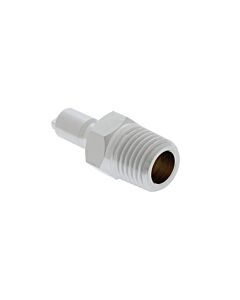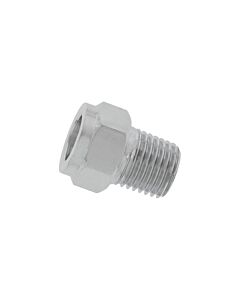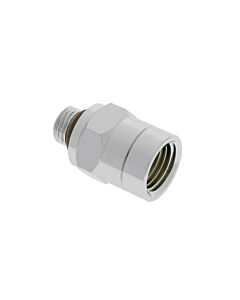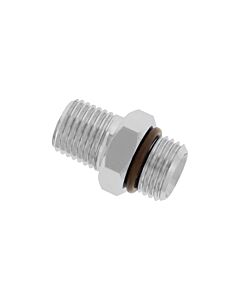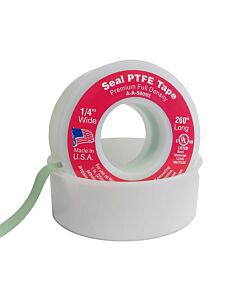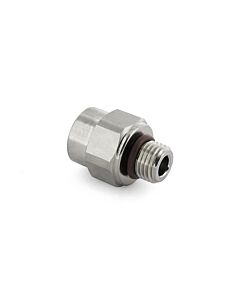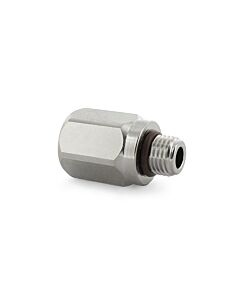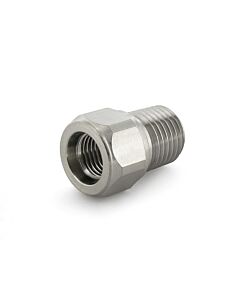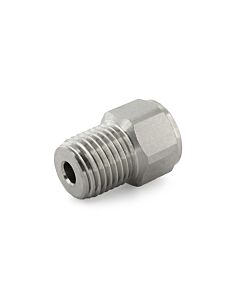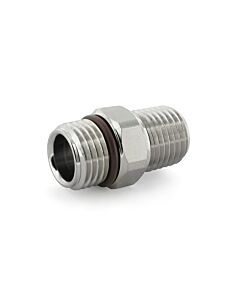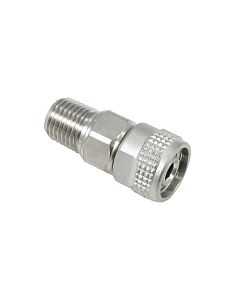NPT to Scuba Adapters
These adapters allow you to mate the UNF thread sizes commonly seen in SCUBA diving equipment to the NPT thread sizes commonly seen in gas handling equipment. NPT fittings require thread sealing tape to make gas tight connections.
Using PTFE (aka Teflon) Thread Seal Tape with Oxygen, Nitrox and Trimix
Pure polytetrafluoroethylene (PTFE aka Teflon) thread seal tape may be used as appropriate for joining or sealing the threads of gas handling equipment in oxygen applications, provided it is lubricant-free and properly applied. The recommended grade is GSA A-A-58092 Type II Size 1, a US Federal commercial description for the quality of full density polytetrafluoroethylene thread seal tape. 'Type II' just means the tape is packaged on a plastic spool with a snap-on cover. A relatively uncommon 1/4-inch width (termed 'Size 1') is most appropriate for use with the smaller NPT fittings typically seen in SCUBA applications. The tape must be at least 99% pure PTFE, the remaining 1% to allow for the addition of an oxygen compatible color pigment. PTFE tape is available in a rainbow of colors, although green is commonly associated in the US with oyxgen there is no official standard for color and white is by far the most common color. The PTFE tape must be applied to clean threads with two full wraps to a maximum of three wraps (i.e. about two and half wraps), taking care to ensure it is not contaminated while being applied and loose strands are not exposed to high velocity gas streams.
However, PTFE tape is available in various other grades, some of which contain a large proportion of material other than PTFE. Avoid plumbing grades of 'pipe tape' that only meet the T27730A standard (with weak specifications for purity and density) and are often lubricated. The industry also sees a lot of generic product produced offshore that does not conform to the standards they claim to meet, substituting cheap or low quality materials. If any of these grades of tape come into contact with high pressure oxygen there is a chance that an ignition will occur with the risk of injury to the operator and damage to the equipment. While oxygen compatible materials are not readily combustible, nearly all materials can still serve as fuel in the kindling chain of an oxygen fire. The use of oxygen compatible materials does not eliminate the need to always follow best practices for oxygen handing, including avoiding contamination and opening valves slowly.
